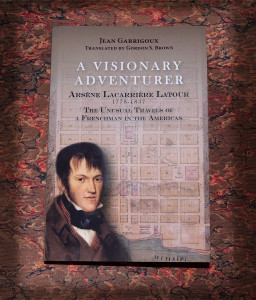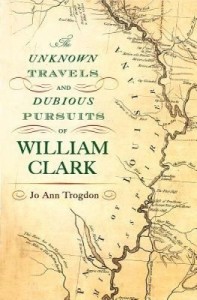New Book Reveals Arsene Latour’s Adventures
February 11, 2018 in American History, European History, general history, History, Louisiana History, Nautical History, Texas History
Engineer-mapmaker, War of 1812 historian, architect and erstwhile secret agent Arsene Lacarriere Latour comes vibrantly to life in the new English translation of “A Visionary Adventurer, Arsene Lacarriere Latour 1778-1837, the Unusual Travels of a Frenchman in the Americas” by Jean Garrigoux.
Originally printed in French in 1997, the Latour biography was translated by retired diplomat Gordon S. Brown and published by the University of Louisiana at Lafayette press in 2017.
This biography draws from the large archive of Latour manuscripts and correspondence found in the Martine Bardon collection of France, and includes many important revelations about political intrigues of the United States, French Bonapartists, Spanish and Freemasons in the US, Cuba and Texas during the early 1800s. Although substantiation is undocumented, Latour seems to have been an unpaid double agent for the US.
Best known as an historian and early day journalist for his 1816 work, “An Historical Memoir of the War in West Florida and Louisiana in 1814-1815,” Latour was much more than just an engineer-architect turned soldier at New Orleans during the British invasion of Louisiana: he was a multi-talented Renaissance man of considerable skills who dealt with the leading powerful men of his time. This narrative of his life also clearly shows that he was a keen political analyst and observer. The English translation allows non-Francophones to appreciate this biography for the first time.
Mostly forgotten by history, Latour is brought dramatically to life in this biography. Plagued by chronic illness all his life in a time when disease often led to early death, Latour did not let that keep him from doing dangerous explorations of the frontier, including up the Arkansas River among the Indians. He also made frequent trips between New Orleans, Philadelphia, Washington, D.C., and Cuba. He conducted special agent work that could have gotten him killed. Adventure was written large upon his soul.
Born in Aurillac, France, Latour came to New York from the slave revolution ravaged Saint Domingue in 1804. He then quickly headed south to Louisiana. He adopted the US and was deeply proud of the American citizenship he obtained in April 1812 while living in New Orleans. In an 1829 letter to friend and newly elected President Andrew Jackson, Latour wrote, “No consideration whatever could induce me to renounce the honorable title of American citizen, which I have and will always prefer to any fortune.”
In addition to Jackson, Latour knew and interacted with James Madison, James Monroe, Joseph Bonaparte, Edward Livingston, William C.C. Claiborne, General James Wilkinson and Peter Du Ponceau. He was a close friend of Napoleon’s favorite soldier, Charles Lallemand, and with privateer Jean Laffite.
Latour was a superb architect. His handiwork can be readily seen in New Orleans’ French Quarter by the buildings he created, most notably the famous Napoleon House, built in 1814. He designed the original city plan of Baton Rouge, La. In Cuba, where he lived for nearly 17 years, he built bridges and a fountain, plus brought the first steam engines to the island.
Through Latour’s correspondence and those of his associates, the biography reveals the complexity and depth of this artful French adventurer of the Gulf of Mexico. It is quite a wonderful, absorbing work, interweaving Cuban histories and archives with the Bardon Latour family collection to show how everything meshed together in a tapestry of intrigues. This is a worthwhile book to add to any early southern history enthusiast’s library, sure to be consulted and reread many times to garner at least a better picture of what life must have been like during the time South America was endeavoring to gain independence from Spain, privateers and pirates were rampant on the Gulf of Mexico waters, and politicians and filibusters plotted to seize borderlands of the US interior. I heartily recommend it.


Recent Comments